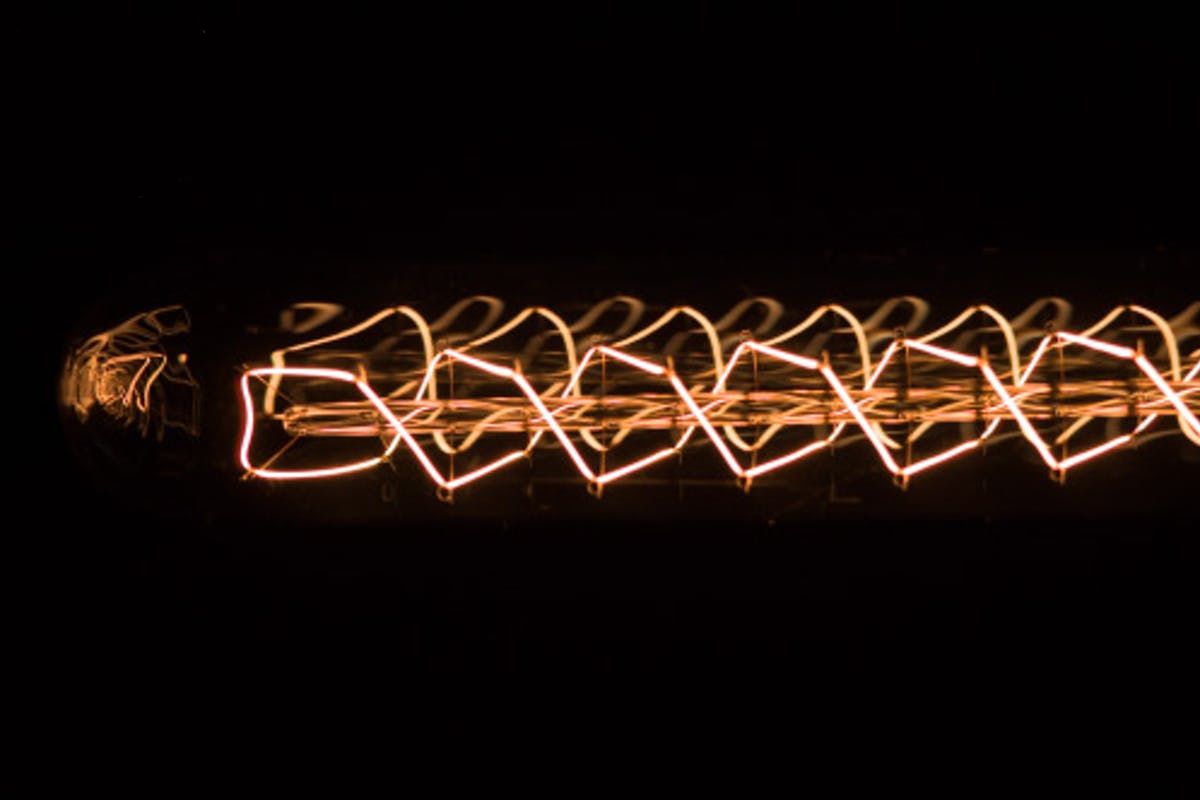
The flow of electricity follows similar principles to the flow of water in pipes, as we shall see, with the exception that an electrical system must make a complete circuit.
In mains wiring, the power source is the national electrical distribution system which is mostly outside our control.
Of course, the distribution company doesn't run wires or cables directly from the power station to our houses.
There is all manner of other stuff between them and us, but that isn't all that important. In most cases, you can proceed as if a small power station was connected directly to your house.
Currents you will encounter in practice range from about 0.5 amps (through a lightbulb) to about 40 amps (an electric shower). Technically 'amps' is short for 'Ampères', but the full name is now rarely used.
The mathematical symbol for current, as it is written in calculations, is not 'C' (for current) or 'A' (for amps) but in fact 'I'.
This is just because the symbols 'C' and 'A' are reserved for other things.
You will occasionally come across currents measured in milliamps ('mA' for short). A milliamp is a thousandth of an amp.
For example, most earth-leakage breakers are used in domestic wiring trips at 30 mA, which is about one-thirtieth of an amp.
A conductor is defined as anything that can carry a flow of electricity. In electrical practice, conductors tend to be copper wire or copper bars, usually hidden away inside plastic sleeves.
The sleeves are insulators, that is, materials that prevent the flow of electricity. It is the insulator that keeps the electrical current where it belongs - inside the power cable.
In the UK (and everywhere else, as far as I know), electricity is distributed around the country in the form of alternating currents.
This means that the flow of electrical current changes direction, usually 50 or 60 times per second.
There are two reasons for this, both historical. First, electrical transformers (which we need to change the voltage, see below) only work with alternating currents.
Second, we generate electricity by spinning wires around inside magnets (this is a bit of a simplification, of course), and this naturally produces an alternating current.
At the points where the current is about to change direction, there will (for a short time) be no current flowing at all. 'Alternating current' is usually abbreviated to 'AC'.
The fact that the current is alternating has little practical impact on domestic wiring or cable.
If you grab a live conductor you'll get a shock that is just as unpleasant even though, in principle, part of the time no current will be flowing.
One area where the alternating nature of the electrical supply is apparent, however, is in the use of fluorescent lights.
Incandescent (filament) bulbs generate their light because the filament becomes white-hot.
It cannot heat up and cool down as fast as the alternation of the electrical current, so the light is fairly constant.
Fluorescent lights, on the other hand, produce a detectable flicker at the speed of the supply alternation.
The light from a fluorescent tube will 'pulse' about 100 times per second (50 times with the supply current in one direction and 50 in the other).
We can't normally see this flicker, but it does tend to make rotating machines look as though they're standing still, or going backward.
This is why we are warned not to use drilling equipment, for example, in strong fluorescent light.